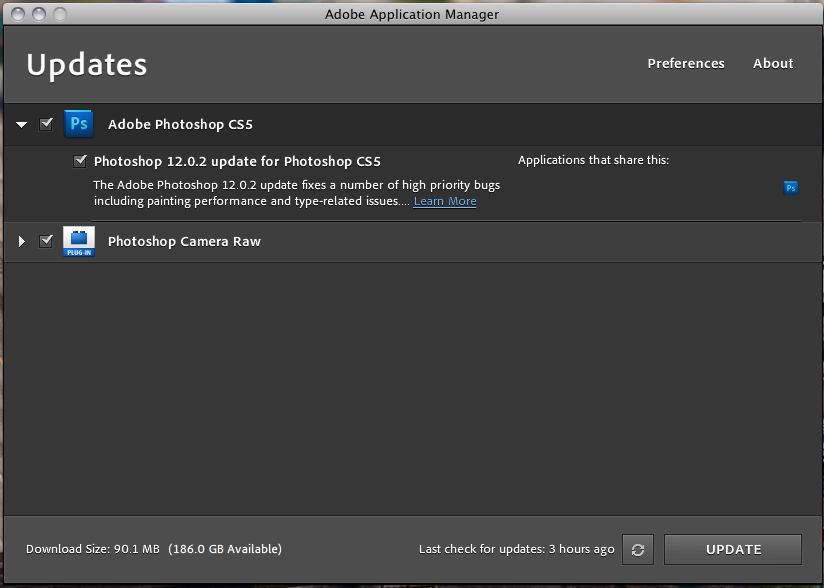- Jun 04, 2013 I've just bought a Fuji XE-1 camera and I've read that one needs the 7.4 version of the camera raw plug-in to handle its (RAF) files. However, when I try to update to this version I get the message that this is not ment for my CS5.5.
- Jan 18, 2018 6.7 is the newest camera raw for cs5. For the other files, which are to new too be supported by camera raw 6.7, you can use the adobe dng converter to convert them to dng copies which then cs5 should open. Adobe - Adobe Camera Raw and DNG Converter: For Macintosh: Adobe DNG Converter 10.1. How to use the dng converter.

If you haven’t discovered the Camera Raw capabilities in Adobe Photoshop, you’ll want to give them a try. The Camera Raw format is available for image capture in many cameras. Simply choose the format in your camera’s settings as Raw instead of JPEG or TIFF.
Frequent updates provide support for the latest cameras as well as new features available in Adobe Photoshop CC and Lightroom CC. Camera Raw (2.3 or later) supports raw files in the Digital Negative (DNG), a raw file format made available to the public by Adobe.
These Raw files are a bit larger than standard JPEG files, but you capture an enormous amount of data with the image that you can retrieve after opening.
A Camera Raw file contains unprocessed picture data from a digital camera’s image sensor, along with information about how the image was captured, such as camera and lens type, exposure settings, and white balance setting. When you open the file in Adobe Photoshop CS5, the built-in Camera Raw plug-in interprets the Raw file on your computer, making adjustments for image color and tonal scale.
When you shoot JPEG images with your camera, you’re locked into the processing done by your camera, but working with Camera Raw files gives you maximum control over images, such as controlling their white balance, tonal range, contrast, color saturation, and image sharpening. Cameras that can shoot in Raw format have a setting on the camera that changes its capture mode to Raw.
Rather than write a final JPEG file, a Raw data file is written, which consists of black-and-white brightness levels from each of the several million pixel sites on the imaging sensor. The actual image hasn’t yet been produced, and unless you have specific software, such as the plug-in built into Adobe Photoshop, opening the file can be difficult, if not impossible.
To open a Camera Raw file, simply choose File→Browse. Adobe Bridge opens, and you see several panels, including the Folders, Content, Preview, and Metadata panels. In the Folders panel, navigate to the location on your computer where you’ve saved Camera Raw images; thumbnail previews appear in the Content panel.
Think of Camera Raw files as photo negatives. You can reprocess them at any time to achieve the results you want.
Right-click (Windows) or Control-click (Mac) a JPEG or TIFF file and choose Open in Camera Raw from the contextual menu. This is a great way to experiment with all the cool features available with this plug-in, but your results aren’t as good as if you used an actual Raw file.

Adobe Camera Raw Plugin For Cs5 Extended
If Adobe Photoshop CS5 doesn’t open your Raw file, you may need to update the Raw plug-in. The plug-in should be downloaded and placed in this location in Windows: C:Program FilesCommon FilesAdobePlug-InsCS5File Formats, and this location on the Macintosh: LibraryApplication SupportAdobePlug-InsCS5File Formats.